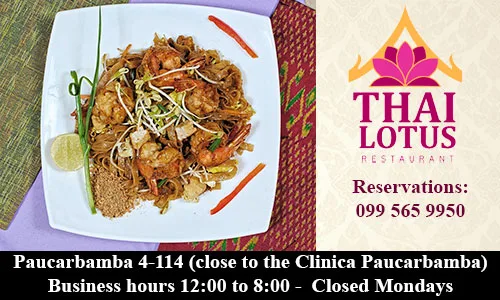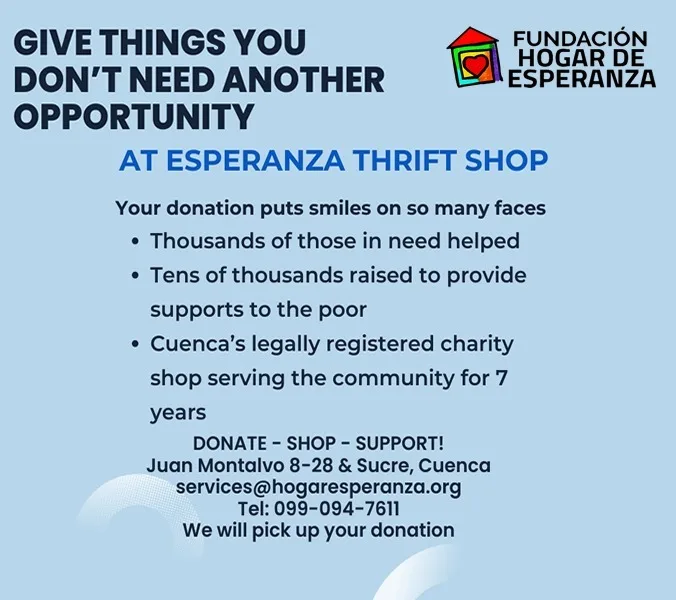Buenaventura nature preserve, southwest of Cuenca, provides dazzling bird displays
Text and photos by Doug Hansen
You don’t have to be a hard-core bird watcher in order to be mesmerized by the dazzling display of hummingbirds, and various other tropical birds, that swarm to the feeders at one of Ecuador’s special nature preserves, Buenaventura.

Toucans are common in the Buenaventura reserve.
For me, the occasional brightly colored toucans and turquoise green honeycreepers were overshadowed by a never-ending stream of hummingbirds of every size and shape — ranging from tiny brown-green hummers with almost no tail, to impressively large, rainbow-tinted ones, some with tails longer than their bodies. When a family of long-snouted coatis (related to raccoons) emerged from the nearby forest and clambered onto the porch searching for a snack, it was clear that we had arrived in an Ecuadorian nature nirvana.
Located in the southwest corner of the country, Buenaventura is one of ten reserves privately purchased and managed by the non-profit Jocotoco Foundation, established in 1998 to conserve some of the planet’s most endangered birds and accompanying biodiversity.

Processions of hummingbirds flock to the feeders
My wife and I discovered this admirable organization while visiting Quito at the beginning of our four-month retirement-celebration tour of South America, and thank goodness we did — through Jocotoco Tours we managed to experience some of the best bird-viewing in the world (Ecuador has 1600 bird species compared to around 800 in the U.S.)
Our first introduction to this notable organization took us to the Yanacocha Reserve, about 45 minutes from Quito. Perched high in the Andes mountains at 11,000 to 13,000 feet, this reserve, like the others, was mainly established to protect critically endangered birds — in this case, the 300 remaining black-breasted puffleg hummingbirds, found nowhere else on earth. In addition to admiring the beautiful birds, I was also impressed during our forest hike by a plant whose leaves measured nearly five feet across. Following our air-gasping hike, we had tea and a nice lunch in the small restaurant near the visitor’s information center.

Buenaventura is a photographer’s paradise.
The next phase of our Ecuadorian exploration took us to Cuenca, one of the world’s top retirement destinations for foreigners (“expats”). From our new home base in Cuenca, we set out to discover other Jocotoco reserves, starting with Buenaventura, one of the larger reserves near the southern coast that also offered lodging. Although it is possible to fly to Santa Rosa, a town not far from Buenaventura, we opted for the four-hour drive from Cuenca so we could see more of the countryside. During our 120-mile drive, the landscape changed surprisingly from arid, rocky hillsides covered with cacti and bromeliads (!) to lush jungle-like forests. As we neared our destination, banana groves covered both sides of the road as far as the eye could see.

It’s also a gerat place for hikes …
Buenaventura Reserve felt like an oasis in a vast expanse of tropical forests. After many kilometers of bumpy, winding roads, we relished our clean, wood cabin with its private bathroom and two comfy beds. Outside, on the large deck, a hammock beckoned us to slow down and appreciate the panoramic view of the distant mountains cloaked in deep green foliage. Several times my wife, reposing in the hammock, called out “Doug, come quick, two gorgeous toucans are sitting in the tree close to me,” and I was delighted to get great photos of them.

… and for relaxing afterwards.
With only three cabins and the nearby restaurant and expansive porch, the facility imposed itself lightly on the surrounding jungle-like landscape. The staff prepared three tasty meals daily, but what set apart this experience was our ability to observe up-close-and-personal so many gorgeous creatures and plants, either from the porch or while hiking.
A frenetic procession of hummingbirds whirred around each of the four feeders from morning until evening, providing us with endless entertainment as well as exceptional photography opportunities. In fact, bird photographers from around the world, some with astonishingly large lenses, regularly come to photograph birds found nowhere else. Others visitors, however, contentedly click away with their digital phone cameras, or watch with their binoculars.

Lodging is available at the reserve.
During our three-day stay, we particularly enjoyed our 8 km hike through the cloud forest on an abandoned dirt road, during which we inspected colorful insects and tropical plants of every possible shape and texture, while being serenaded by distant howler monkeys and melodic bird songs. Later, our host drove us to a distant part of the reserve to see their new hummingbird park, primarily built to entice local Ecuadorians to better appreciate and conserve their unique natural heritage. I persuaded our visiting American naturalist to take me on a couple of night hikes which opened up a whole new world of exciting discoveries — birds, bugs and spiders that we didn’t see during the day.

And there’s always plenty to eat.
During our return drive to Cuenca, we stopped at our final reserve, Yunguilla, tucked away in the hills at the end of a 5 km dirt road. The reserve’s “forest guard” met us and, machete in hand, led us across a stream that tested our rock-hopping skills, and then up a narrow trail into the hills until we reached a small grove of trees harboring two bird feeders. After a short time, our efforts were rewarded by the appearance of a diminutive gray and white bird, the Pale-headed Brush-Finch, one of the rarest birds in the world, whose 200 remaining members reside in this one small reserve.
When I reflect on why we travel, one of the reasons is to experience magic moments in unique places like Buenaventura, and to find those who make a difference in the world, which is exactly what the Jocotoco Conservation Foundation does. Our memories of Ecuador will include seeing yellow-billed toucans sitting in nearby branches and hearing the intense whirring of rainbow-colored hummingbirds, living freely because people cared enough to protect them.
___________________
Contact Information: info@jocotoursecuador.com; (593) 2 505 129 or 0992 44 00 38; www.jocotoursecuador.com. Donate at www.fjotoco.org.
Misc.: Bring good hiking shoes (trails are often wet or muddy), binoculars, sunscreen, insect repellent, hat, lightweight long-sleeve shirts and long pants (shorts are seldom worn in public and aren’t practical in the forest), rain jacket or umbrella.
_________________
Doug Hansen is a travel writer and photographer in Carlsbad, CA. See more photos and articles at www.HansenTravel.org or Instagram @doug6636.



















